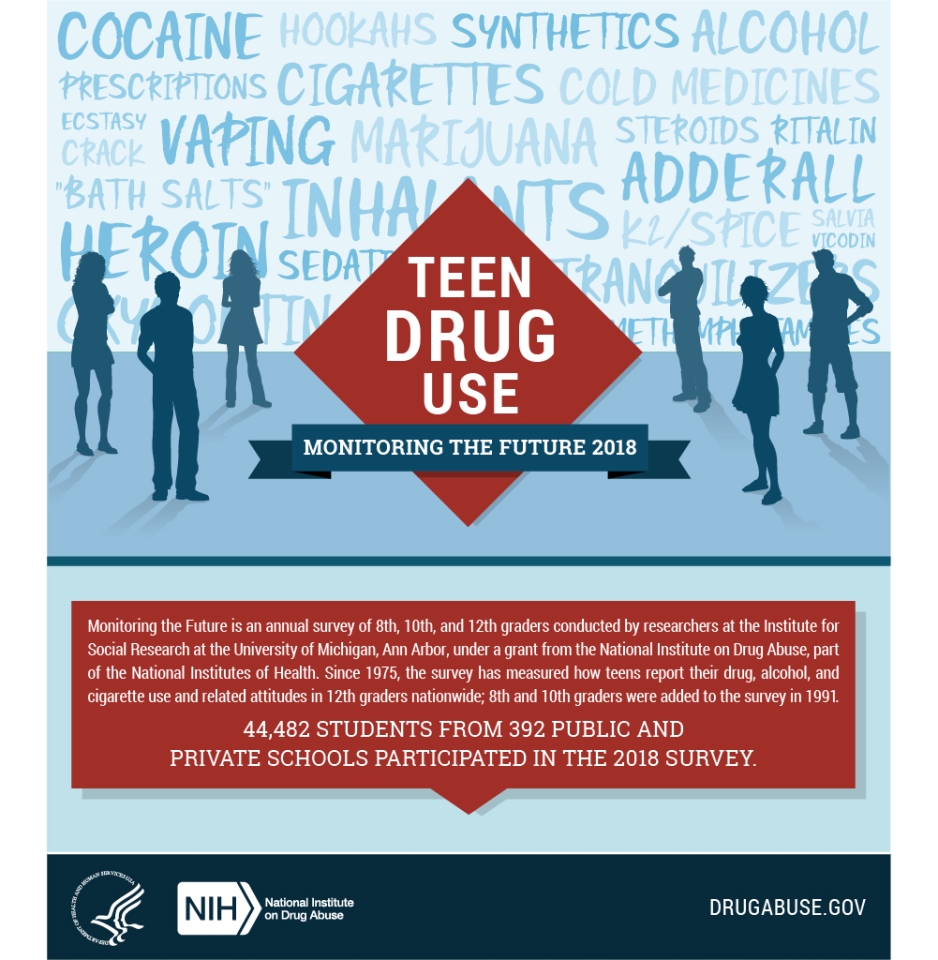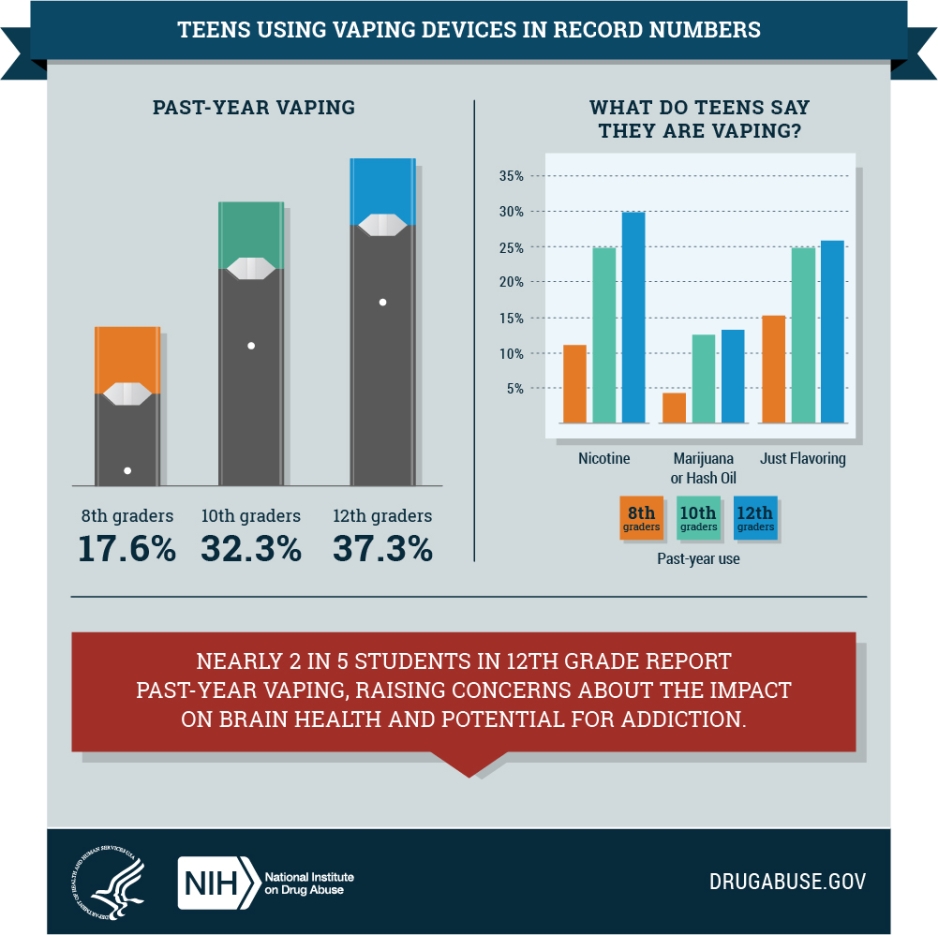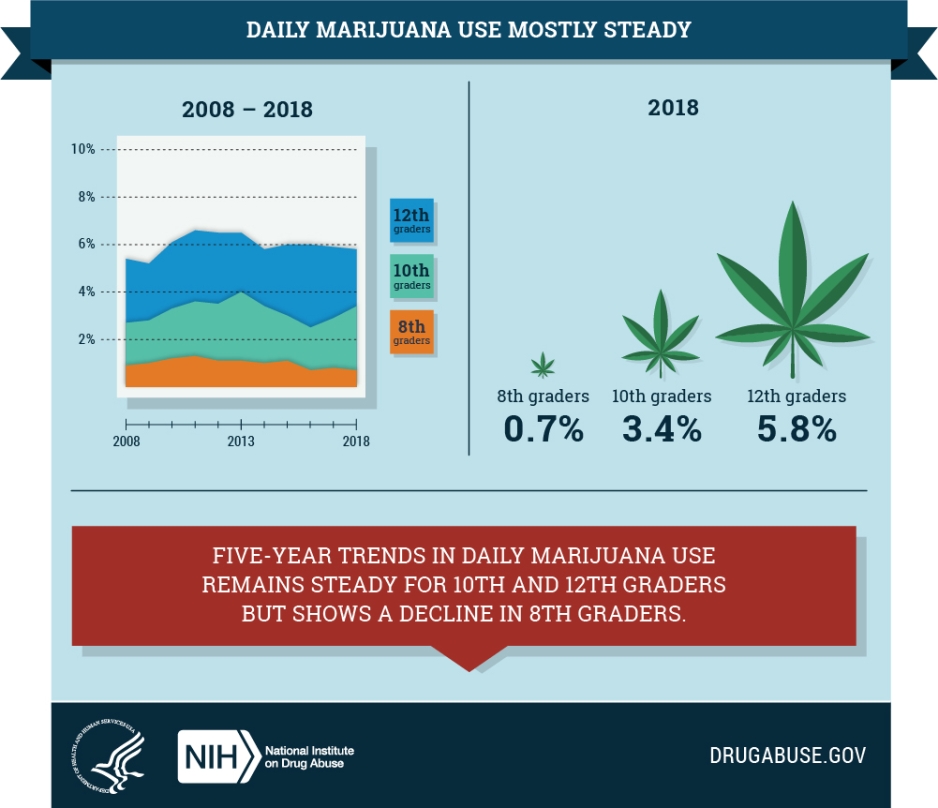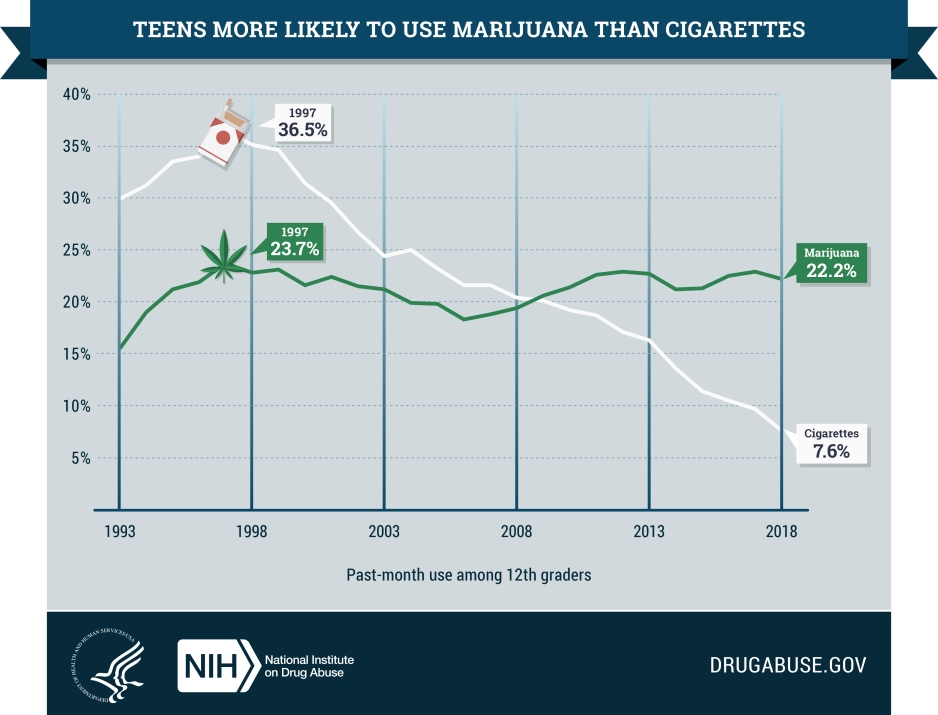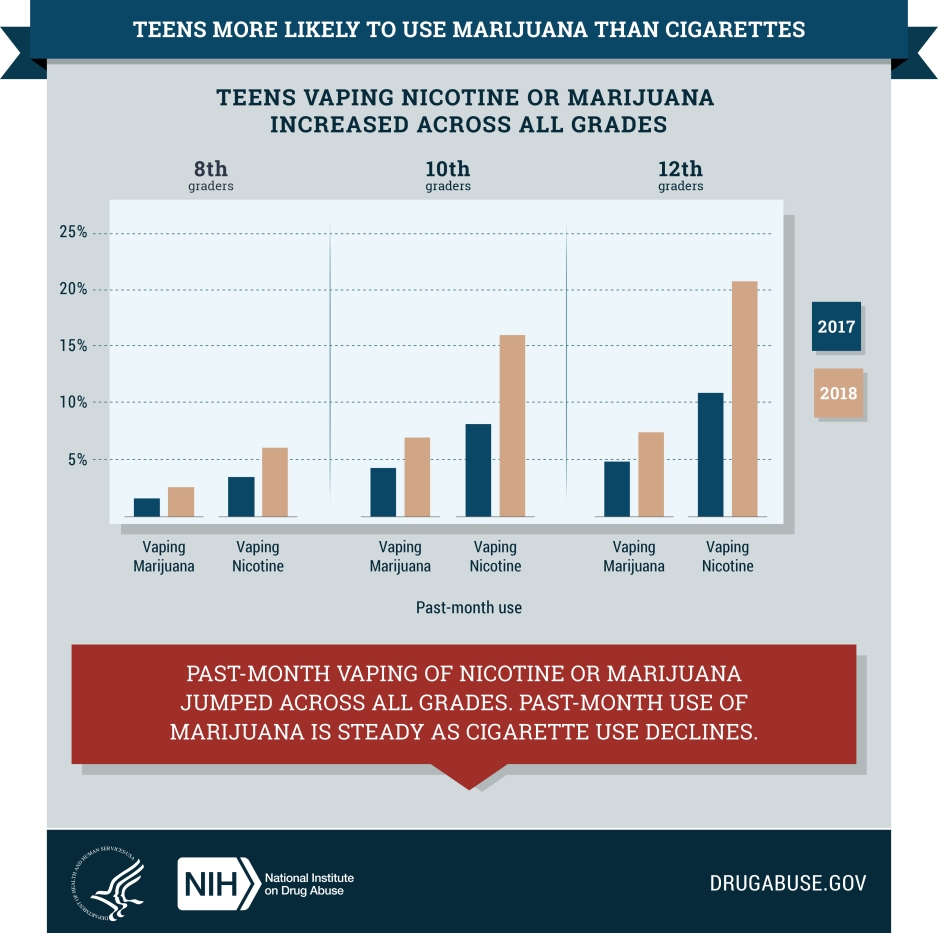This infographic of the NIH’s 2018 Monitoring the Future survey highlights drug use trends among the Nation’s youth for vaping, marijuana, alcohol, cigarettes, and prescription/OTC drugs.
View the Animated Version
Text Description of 2018 MTF Infographic
Monitoring the Future is an annual survey of 8th, 10th, and 12th graders conducted by researchers at the Institute for Social Research at the University of Michigan, Ann Arbor, under a grant from the National Institute on Drug Abuse, part of the National Institutes of Health. Since 1975, the survey has measured how teens report their drug and alcohol use and related attitudes in 12th graders nationwide; 8th and 10th graders were added to the survey in 1991.
44,482 students from 392 public and private schools participated in the 2018 survey.
Figure 2. Teens Using Vaping Devices in Record Numbers
Nearly 2 in 5 students in 12th grade report past-year vaping, raising concerns about the impact on brain health and potential for addiction.
In 2018, past-year vaping for each grade was:
8th grade: 17.6%
10th grade: 32.3%
12th grade: 37.3%
The survey also asked students what they thought they were vaping. These were their responses:
Nicotine:
8th grade: 10.9%
10th grade: 24.7%
12th grade: 29.7%
Marijuana or hash oil:
8th grade: 4.4%
10th grade: 12.4%
12th grade: 13.1%
Just flavoring:
8th grade: 15.1%
10th grade: 24.7%
12th grade: 25.7%
Figure 3: Daily Marijuana Use Mostly Steady
From 2008 to 2018, daily marijuana use was mostly steady among 8th, 10th, and 12th graders.
In 2018, daily marijuana use for each grade was:
8th grade: 0.7%
10th grade: 3.4%
12th grade: 5.8%
Five-year trends in daily marijuana use remains steady for 10th and 12th graders but shows a decline in 8th graders.
Figure 4: Teens More Likely To Use Marijuana Than Cigarettes
Since 1993, there has been a significant decline in monthly cigarette use among 12th graders, while the rate of monthly marijuana use has increased. In its peak year (1997), monthly cigarette use among 12th graders was 36.5 percent, compared to a rate of 7.6 percent in 2018. In 1993, monthly use of marijuana among 12th graders was 15.5 percent, compared to a rate of 22.2 percent in 2018.
Teens Vaping Nicotine or Marijuana Increased Across All Grades
Past-month vaping of nicotine or marijuana jumped across all grades. Past-month use of marijuana is steady as cigarette use declines.
2017 and 2018 monthly nicotine or marijuana vaping use for each grade was:
2017 Vaping Nicotine
8th grade: 3.5%
10th grade: 8.2%
12th grade: 11.0%
2018 Vaping Nicotine
8th grade: 6.1%
10th grade: 16.1%
12th grade: 20.9%
2017 Vaping Marijuana
8th grade: 1.6%
10th grade: 4.3%
12th grade: 4.9%
2018 Vaping Marijuana
8th grade: 2.6%
10th grade: 7.0%
12th grade: 7.5%
Figure 5: Binge Drinking Rates Continue Downward Trend
Binge drinking (five or more drinks in a row in the last 2 weeks) dropped significantly in the past five years across all grades.
Peak years for binge drinking for each grade:
8th grade: 1996 (13.3%)
10th grade: 2000 (24.1%)
12th grade 1998 (31.5%)
In 2018, binge drinking rates for each grade:
8th grade: 3.7%
10th grade: 8.7%
12th graders: 13.8%
Figure 6: Past-year Misuse of Prescription/Over-the-Counter vs. Illicit Drugs
Past-year misuse of prescription/OTC drugs among 12th graders in 2018 were:
Sedatives/Tranquilizers: 5.0%
Adderall®: 4.6%
Opioids: 3.4%
Cough/cold medicine: 3.4%
Ritalin®: 0.9%
Past-year use of illicit drugs among 12th graders in 2018 were:
Marijuana/hashish: 35.9%
Synthetic cannabinoids*: 3.5%
LSD: 3.2%
Cocaine: 2.3%
MDMA (Ecstasy/Molly): 2.2%
Inhalants: 1.6%
Heroin: 0.4%
Past-year misuse of Vicodin® and OxyContin® among 12th graders has dropped dramatically in the past 15 years, from 10.5 percent in 2003 to 1.7 percent in 2018 for Vicodin®, and from 4.5 percent in 2003 to 2.3 percent in 2018 for OxyContin®.
Students Report Lowest Rates Since Start of the Survey
Across all grades, past-year use of illicit drugs other than marijuana holding steady at the lowest levels in over 20 years. (*Synthetic cannabinoids are called “synthetic marijuana” in the survey)
For more information, visit us at @NIDAnews or nida.nih.gov.
The National Institute on Drug Abuse (NIDA) is a component of the National Institutes of Health, U.S. Department of Health and Human Services. The NIDA supports most of the world’s research on the health aspects of drug abuse and addiction. Fact sheets on the health effects of drugs of abuse and information on NIDA research and other activities can be found at nida.nih.gov.
This publication is available for your use and may be reproduced in its entirety without permission from NIDA. Citation of the source is appreciated, using the following language: Source: National Institute on Drug Abuse; National Institutes of Health; U.S. Department of Health and Human Services.

